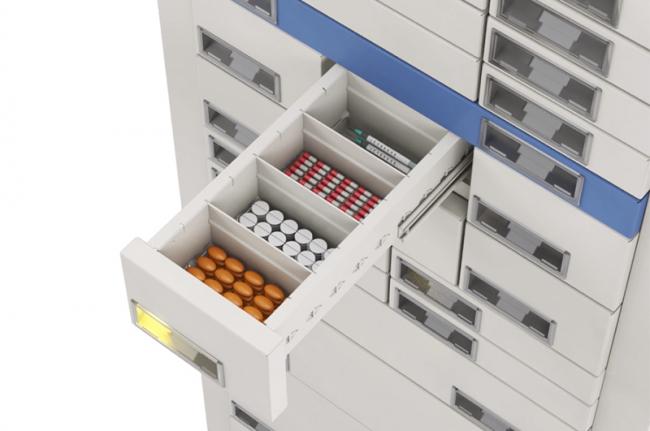Optimizing your Cabinet Configurations
Pharmacists continuously strive to improve their patient safety. Healthcare is a number one priority in facilities, pushing manufacturers in the medical industry to study different strategies to enhance efficiency. Automated dispensing cabinets (ADCs) encourage better medication management for hospital staff. These are medication dispensing cabinets with built-in security and control features to improve workflow efficiency and quality healthcare. Pharmacies fulfill the doctor's prescription and refill medications for the patient. Once it leaves the pharmacy, the staff no longer has any control of the medicine.
ADCs offer transparency by holding a real-time record of the medication. By including a system network of transactions that reports the history of refilled and dispensed medication, they earn peace of mind that the patients are given their medicine at an accurate dosage and at the right time. Nurses will also be more involved in holding accountable for the medication that leaves the pharmacy. It saves the facility money from wasted, expired, and missing inventory stock of pills.
Healthcare researchers conducted a study on two healthcare facilities based in Qatar. The research focused on using automated dispensing cabinets and how it affects their daily workflow in medication management. Upon analyzing the results, the researchers found out that 96% of the nurses have never used an ADC before. Despite that, the overall satisfaction rate of the nurses from both hospitals is 91%. Indeed, implementing the use of technology in your workflow seems to be a daunting experience, including employees who have never used it before. The outcome proved to be a success, and even hospital staff in their 40s and above are satisfied with ADCs.
ADCs are configurable and can be customized to fit any facility's workflow. Reliable equipment is a must to successfully meet the ongoing needs of patients in a healthcare facility. The quantity and sizes of the compartments, the number of dividers, and security features are just some of the points you can configure in your chosen equipment. Furthermore, essential parts are non-customizable to ensure equipment strength and better efficiency.
Medicine and other controlled substances should be kept in storage where no direct light can hit its contents. The NHS has strict regulations of approved materials for manufacturing medical equipment. Any additional features such as antimicrobial properties increase the safety of the medication.
To keep all departments up to date, software listing all medication and quantity is vital. A reliable software ensures an ample supply of drugs for a given period and alerts when a drug is low in stock. Additionally, they will also have access to the patient receiving the medication and confirm the correct dosage. Staff who use the cabinets leave with an accurate record of their transactions in the ADC. Hospitals can now hold someone accountable in case of a medication error.
Medicine should always be in a controlled setting that only gives access to authorized personnel. There are different options to keep all drugs safe and untampered. Passcode keeps medication secure for hospital staff wearing gloves. Fingerprint security is more preferable amongst staff for maximum protection.
There are different compartment sizes to choose from, and the choice depends on the facility's scale and needs. Fortunately, most automated dispensing cabinets are scalable and can be integrated with other ADCs. Other models offer bulk storage, which makes workflow more efficient in high-scale facilities.
To better suit each facility's workflow, automated dispensing cabinets can have additional accessories. Although not required, some departments may find them vital to effectively and efficiently carry out medication management. Keep in mind that there are more accessories than mentioned. For a complete list of accessories, you may contact us here.
In some rare cases where medication is not administered to the patient, a return bin lessens confusion for inventory and gives returned medicines their storage.
A barcode scanner is an optimal accessory for medical facilities that utilize barcodes in their medication inventory. Patients may also have barcode wristlets that ensure staff they're getting their accurate prescription.
Thermal printers or label printers are optional for printing patient transaction receipts or prescription labels
ADCs are highly configurable and effective. Thus, it makes them a necessity for medical facilities. Patients and their families greatly rely on medical professionals for quality healthcare. Unfortunately, medication errors occur at least once per day. Automated dispensing cabinets remove these incidents by making medication management more secure and controlled. With only authorized access to qualified personnel and enhanced security and recording measures to verify patient medication, the staff will feel more at ease at administering medicine.
TouchPoint Medical is a leading provider of automated medication dispensers, mobile workstations, and other telehealth equipment for different healthcare facilities. To learn more, visit their website or contact them for a physical demonstration.


